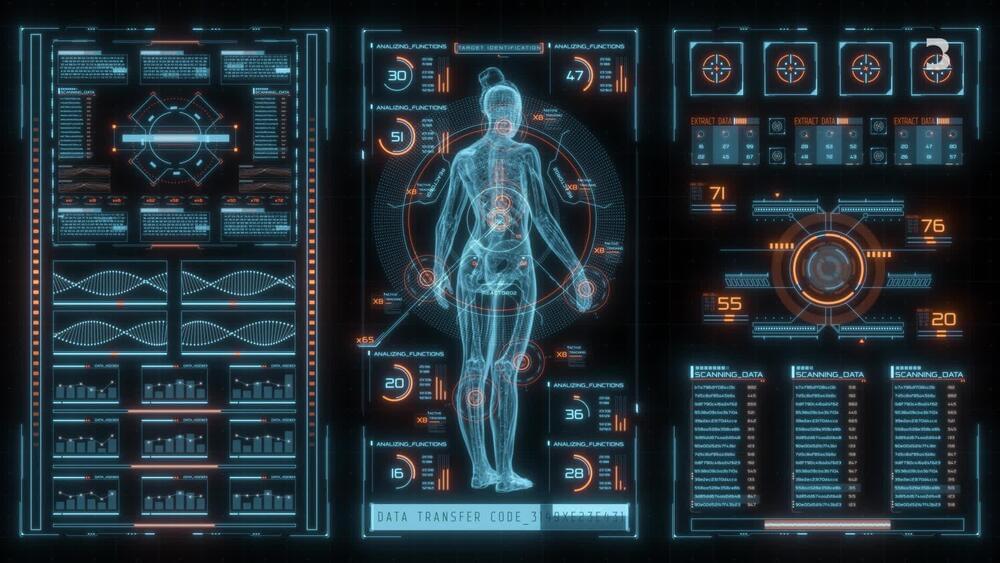The community will consist of 52 single-family homes, and 14Trees is aiming to continue printing one home per week.
Get the latest international news and world events from around the world.

Largest Structures in the Universe Contain Magnetic Fields That Shed Light on Cosmic Web Formation
Magnetic fields abound in the universe. Despite the fact that the Universe is electrically neutral, atoms may be ionized into positively and negatively charged nuclei and electrons.
According to Science Alert, magnetic fields are created when charges are accelerated. Collisions between and inside interstellar plasma are one of the most prevalent sources of large-scale magnetic fields. This is one of the primary generators of magnetic fields at the cosmic scale.

The Future With Hannah Fry
The elixir of life has been sought for thousands of years. Today a scientific revolution has begun. Hannah joins bio-hackers in California, and a neuroscientist along the streets of Tokyo to experience the latest age-defying techniques and examines what it means to live to a healthy, happy old age. What will extended lifespans mean for society, and will the effort all be worthwhile in the end? (Source: Bloomberg)

Are We Alone In The Multiverse?
One of the great questions for humanity is whether we are alone in the universe. Indeed, astrobiologists appear tantalizingly close to being able to spot the signs of life on other Earths — should it exist elsewhere — using modern observatories such as the James Webb Space Telescope.
Now a group of astronomers have taken this question further by asking whether life could exist in other universes. In other words, they want to know whether we are alone in the multiverse. And they have developed a way to explore this question by considering the range of conditions that might exist in other universes.
The question comes about because the fundamental constants that govern physical laws have values that seem perfectly arranged to allow life to emerge.

We Just Got The Most Precise Measurement of a Property of a Particle, Ever
The Standard Model of particle physics is our current best-guess on what the blue-prints for matter looks like. Of all of its predictions, none are as precise as the magnetic moment of the electron.
Not only is it precisely predicted, it’s among the most accurately measured of any particle’s properties. And while these two values are close, they don’t overlap entirely, providing tantalizing hints of new physics.
Getting closer to the exact value of the electron magnetic moment – simply put, how strongly an electron behaves like a tiny magnet – might one day unlock a greater understanding of the building blocks of physics and how they interact.


Better metric for prioritizing conservation of ‘evolutionarily distinctive’ species
An updated metric for prioritizing species’ conservation that incorporates scientific uncertainty and complementarity between species, in addition to extinction risk and evolutionary distinctiveness, has been published on February 28 in the open access journal PLOS Biology, authored by Rikki Gumbs from the Zoological Society of London (ZSL), U.K., and colleagues.
In 2007, ZSL established the Evolutionarily Distinct and Globally Endangered (EDGE) metric to prioritize species for conservation based on preserving evolutionary history embodied within endangered species. The approach allocates each species a score based on the evolutionary distance, measured in millions of years, that separates a species from its closest living relatives, and its conservation status in the IUCN Red List.
EDGE has since been applied to mammals, amphibians, birds, sharks and rays, corals, and flowering plants, and is used to allocate conservation funding. To update the EDGE metric to incorporate recent advances in evolutionary biology and conservation, ZSL hosted a workshop for conservation scientists and practitioners, who reached a consensus on EDGE2—an updated metric that includes the extinction risk of closely related species and uncertainty in species’ relationships and conservation status.

Social deficits and seizures in autism genetic subtype tied to overexcited brain circuits
Northwestern Medicine scientists have identified the cause of a genetic subtype of autism and schizophrenia that results in social deficits and seizures in mice and humans.
Scientists have discovered a key feature of this subtype is a duplicated gene that results in overactive or overexcited brain circuits. The subtype is called 16p11.2 duplication syndrome.
“We found that mice with the same genetic changes found in humans are more likely to have seizures and also have social deficits,” said lead author Marc Forrest, research assistant professor of neuroscience at Northwestern University Feinberg School of Medicine.

Computational biology in rare disease research
Rare diseases affect 6–8% of the world’s population and, although we know that small changes in the patient’s DNA are responsible for causing the majority of cases, most people wait several years before they are diagnosed and potentially treated. This hunt for an explanation is extremely distressing for the patients and their families, as well as costing healthcare systems large sums of money for medical investigations and treatments.
Background
Even for the simplest cases, where a single change in a patient’s DNA disrupts a gene and always causes the rare disease, identifying which change in the three billion base pairs in each of our genomes is a huge challenge. Prior to the completion of the human genome in 2003, we did not even know what the normal state of affairs was. Even then, the available sequencing technology limited us to only interrogating small parts of a patient’s genome, directed by intelligent guesswork, with mixed results.